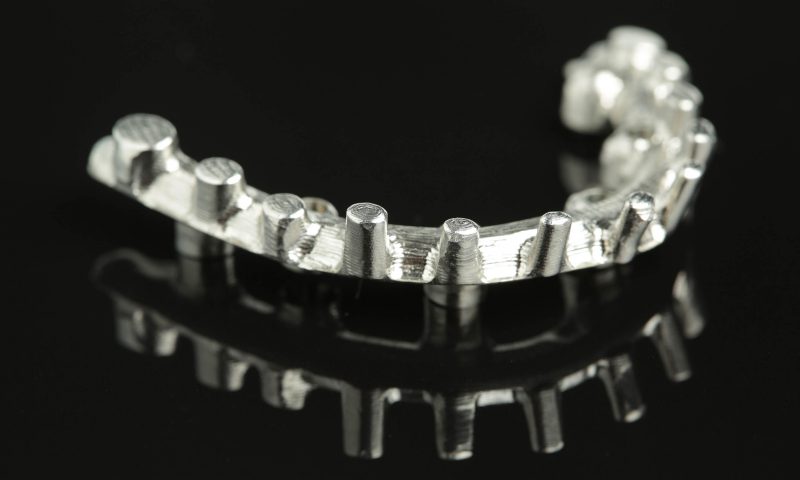

The complexity of the machinery that AVINENT has at its main headquarters enables the firm to conduct production operations with a high level of detail and complexity.
The complexity of the machinery that AVINENT has at its main headquarters enables the firm to conduct production operations with a high level of detail and complexity. Together with the experience and background of the professionals working at the company, this has resulted in one of AVINENT’s most valued products: CAD-CAM hybrid structures. The possibility of obtaining this product in various materials also allows professionals to perform restorative dentistry work using different clinical techniques.
CAD-CAM hybrid structures are a product that makes up the “skeleton” of the restorative dentistry of a patient’s teeth. Unlike typical dentures, which are removable, hybrid structures are permanently fastened to the patient’s mouth with screws. “The machining sets the screws very well. They don’t come loose,” says Dr. Pep Serra, Director of the Scientific Committee of Corus Design Labs, who has been working with this AVINENT product for the last 10 years. Joan Golobart, the Director of Odontecnic S.L., who has been working with the product for seven years, stresses “the superiority of the structures on implants and their passive-screw retention.”

AVINENT enables dentists and prosthetists to produce these pieces in titanium (Ti) or cobalt chromium (CoCr), allowing professionals to adapt to different sorts of situations according to the patient’s restorative dentistry needs or compatibility with the type of metal used. “Being able to work with either Ti or CoCr is a great advantage,” says Golobart. The milling of titanium can achieve much lighter and highly biocompatible pieces that patients practically do not reject. As Dr. Serra explains, “we work with this material in 90% of all cases. It also enables us to work with finer structures, though we do have to use CoCr for issues of hardness.”
AVINENT has also recently made new possibilities available like PEEK, a pure material that boasts of admirable technical advantages, prevents allergy problems, is neutral in taste and blocks all electric or thermal conductivity, in addition to other virtues.
The price of AVINENT’s CAD-CAM hybrid structures is also significant for those who use them. According to Golobart, “their competitive price is very important for both dentists and patients.”

Whether or not the metal comes into contact with the tissues is a matter of preference and esthetics
AVINENT manufactures structures with different geometries and characteristics to apply two types of clinical techniques. The first technique brings the metal into direct contact with the patient’s gum, while in the second the metal is covered by resin, and it is the resin that comes into direct contact with the tissues. “Patients will be interested in one option or the other depending on the situation,” says Golobart. “We work with the option of connecting titanium to the gum directly whenever possible, but we often cannot do so for esthetic reasons or because of the patient’s preferences,” explains Dr. Serra.

Retentions: a support to prevent dental fractures
Regarding the features and form of the piece, AVINENT manufactures hybrid structures milled with retentions on the upper part, as well as hybrid structures lacking them. These retentions are small extensions that protrude at the top of the milled structure and act as a support for the position of the teeth to prevent them from breaking. In pieces without retentions, resin, which envelops the teeth, is the factor of maximum stability. According to Dr. Serra, “retentions help us by improving efficiency in treatments that require milled hybrid structures, that are often complex and that generally fail at a higher rate than what we are used to.”

Golobart concludes by saying that AVINENT “is a leading company in digital scanning, which enables the production of hybrid structures with a very high degree of precision. The company’s commitment to progress in the service and design of this product have enabled me to work with a passive fit, a variety of materials and an unprecedented value for the money.”